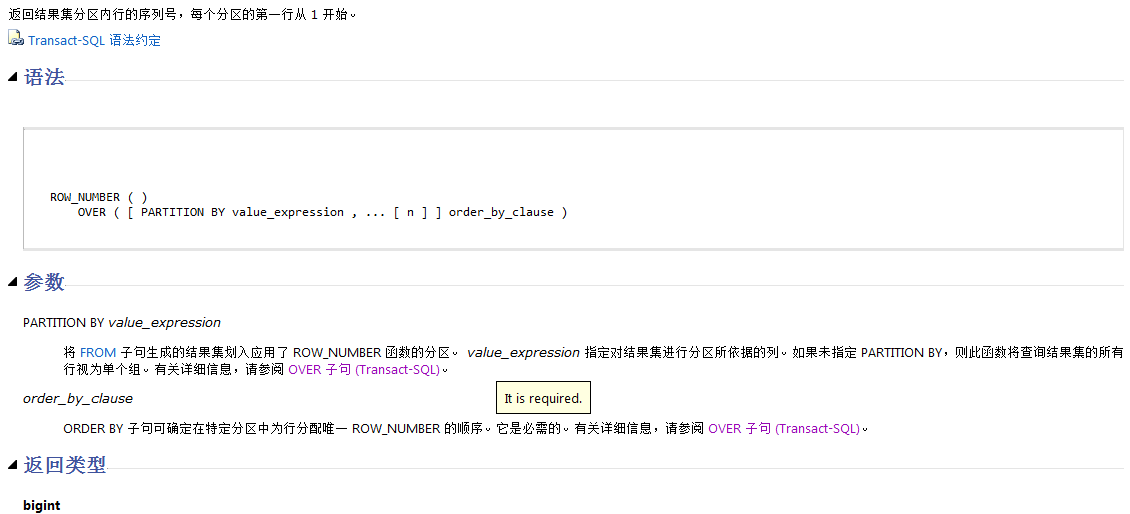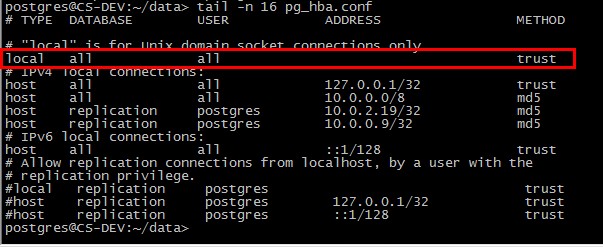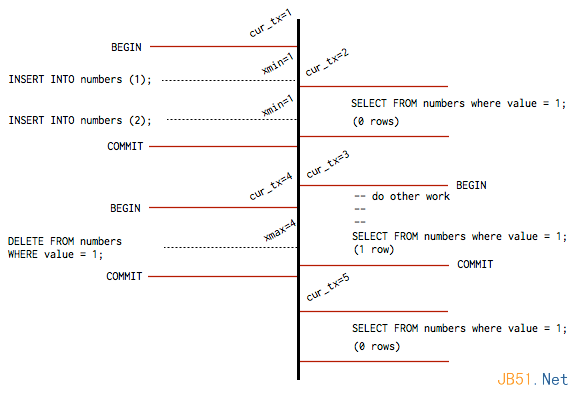postgreSQL中的row_number() 与distinct用法说明
我就废话不多说了,大家还是直接看代码吧~
select count(s.*) from ( select *, row_number() over (partition by fee_date order by fee_date) as gr from new_order where news_id='novel' and order_status='2' ) s where s.gr = 1 SELECT count(DISTINCT fee_date) as dis from new_order where news_id='novel' and order_status='2'
这两个SQL执行所得到的数据是一样的!
工具:postgreSQL
1.我们要清楚,sql的执行顺序:
from语句->where语句->group by语句->having语句->order by语句->select 语句
2.row_number()分析函数
说明:返回结果集分区内行的序列号,每个分区的第一行从 1 开始。
语法:ROW_NUMBER () OVER ([
备注:ORDERBY 子句可确定在特定分区中为行分配唯一 ROW_NUMBER 的顺序。
参数:
返回类型:bigint 。
row_number()从1开始,为每一条分组记录返回一个数字
select *, row_number() over (order by fee_date) from new_order

先把 fee_date 升序排列,再为升序以后的每条记录返回一个序号
select *, row_number() over (partition by fee_date order by fee_date) as gr from new_order

表示根据fee_date分组,在分组内部根据 fee_date排序,而此函数计算的值就表示每组内部排序后的顺序编号(组内连续的唯一的)
2.distinct
语法:
SELECT DISTINCT 列名称 FROM 表名称
distinct这个关键字用来过滤掉多余的重复记录只保留一条
select DISTINCT fee_date from new_order

select DISTINCT fee_date,order_status from new_order

从结果可以看出,是根据“fee_date+order_status”来去重复数据的,distinct同时作用在了fee_date和order_status上
SELECT count(DISTINCT fee_date) as dis from new_order where news_id='novel' and order_status='2'

select id,distinct fee_date from new_order ; –会提示错误,因为distinct必须放在开头
distinct语句中select显示的字段只能是distinct指定的字段,其他字段是不可能出现的
补充:PostgreSQL ROW_NUMBER() OVER()
我就废话不多说了,大家还是直接看代码吧~
SELECT * FROM ( SELECT tt.s_ci s_ci, sm.ci, -- getdistance ( -- tt.longitude, -- tt.latitude, -- sm.longitude, -- sm.latitude -- ) distance, ROW_NUMBER () OVER ( PARTITION BY tt.s_ci ORDER BY getdistance ( tt.longitude, tt.latitude, sm.longitude, sm.latitude ) ) rn FROM sm_cl_location sm INNER JOIN ( SELECT s_ci, longitude, latitude, n3_pci, n3_earfcn FROM plan_ott_data WHERE 1 = 1 AND ( s_ci = '460-00-1012286-2' OR s_ci = '460-00-25514-130' ) AND rpt_time BETWEEN '2018-04-30' AND '2018-05-29' ) tt ON sm.pci = tt.n3_pci AND sm.hannel_number = tt.n3_earfcn ) T WHERE T .rn BETWEEN 1 and 3
语法:
ROW_NUMBER() OVER( [ PRITITION BY col1] ORDER BY col2[ DESC ] )
解释:
ROW_NUMBER()为返回的记录定义个行编号, PARTITION BY col1 是根据col1分组,ORDER BY col2[ DESC ]是根据col2进行排序。
举例:
postgres=# create table student(id serial,name character varying,course character varying,score integer);
CREATE TABLE
postgres=#
postgres=# \d student
Table "public.student"
Column | Type | Modifiers
--------+-------------------+----------------------------------------------
id | integer | not null default nextval('student_id_seq'::regclass)
name | character varying |
course | character varying |
score | integer |
insert into student (name,course,score) values('周润发','语文',89);
insert into student (name,course,score) values('周润发','数学',99);
insert into student (name,course,score) values('周润发','外语',67);
insert into student (name,course,score) values('周润发','物理',77);
insert into student (name,course,score) values('周润发','化学',87);
insert into student (name,course,score) values('周星驰','语文',91);
insert into student (name,course,score) values('周星驰','数学',81);
insert into student (name,course,score) values('周星驰','外语',88);
insert into student (name,course,score) values('周星驰','物理',68);
insert into student (name,course,score) values('周星驰','化学',83);
insert into student (name,course,score) values('黎明','语文',85);
insert into student (name,course,score) values('黎明','数学',65);
insert into student (name,course,score) values('黎明','外语',95);
insert into student (name,course,score) values('黎明','物理',90);
insert into student (name,course,score) values('黎明','化学',78);
1. 根据分数排序
postgres=# select *,row_number() over(order by score desc)rn from student; id | name | course | score | rn ----+--------+--------+-------+---- 2 | 周润发 | 数学 | 99 | 1 13 | 黎明 | 外语 | 95 | 2 6 | 周星驰 | 语文 | 91 | 3 14 | 黎明 | 物理 | 90 | 4 1 | 周润发 | 语文 | 89 | 5 8 | 周星驰 | 外语 | 88 | 6 5 | 周润发 | 化学 | 87 | 7 11 | 黎明 | 语文 | 85 | 8 10 | 周星驰 | 化学 | 83 | 9 7 | 周星驰 | 数学 | 81 | 10 15 | 黎明 | 化学 | 78 | 11 4 | 周润发 | 物理 | 77 | 12 9 | 周星驰 | 物理 | 68 | 13 3 | 周润发 | 外语 | 67 | 14 12 | 黎明 | 数学 | 65 | 15 (15 rows)
rn是给我们的一个排序。
2. 根据科目分组,按分数排序
postgres=# select *,row_number() over(partition by course order by score desc)rn from student; id | name | course | score | rn ----+--------+--------+-------+---- 5 | 周润发 | 化学 | 87 | 1 10 | 周星驰 | 化学 | 83 | 2 15 | 黎明 | 化学 | 78 | 3 13 | 黎明 | 外语 | 95 | 1 8 | 周星驰 | 外语 | 88 | 2 3 | 周润发 | 外语 | 67 | 3 2 | 周润发 | 数学 | 99 | 1 7 | 周星驰 | 数学 | 81 | 2 12 | 黎明 | 数学 | 65 | 3 14 | 黎明 | 物理 | 90 | 1 4 | 周润发 | 物理 | 77 | 2 9 | 周星驰 | 物理 | 68 | 3 6 | 周星驰 | 语文 | 91 | 1 1 | 周润发 | 语文 | 89 | 2 11 | 黎明 | 语文 | 85 | 3 (15 rows)
3. 获取每个科目的最高分
postgres=# select * from(select *,row_number() over(partition by course order by score desc)rn from student)t where rn=1; id | name | course | score | rn ----+--------+--------+-------+---- 5 | 周润发 | 化学 | 87 | 1 13 | 黎明 | 外语 | 95 | 1 2 | 周润发 | 数学 | 99 | 1 14 | 黎明 | 物理 | 90 | 1 6 | 周星驰 | 语文 | 91 | 1 (5 rows)
4. 每个科目的最低分也是一样的
postgres=# select * from(select *,row_number() over(partition by course order by score)rn from student)t where rn=1; id | name | course | score | rn ----+--------+--------+-------+---- 15 | 黎明 | 化学 | 78 | 1 3 | 周润发 | 外语 | 67 | 1 12 | 黎明 | 数学 | 65 | 1 9 | 周星驰 | 物理 | 68 | 1 11 | 黎明 | 语文 | 85 | 1 (5 rows)
只要在根据科目排序的时候按低到高顺序排列就好了。
以上为个人经验,希望能给大家一个参考,也希望大家多多支持潘少俊衡。如有错误或未考虑完全的地方,望不吝赐教。
版权声明
本文仅代表作者观点,不代表本站立场。
本文系作者授权发表,未经许可,不得转载。
本文地址:/shujuku/PostgreSQL/106316.html













